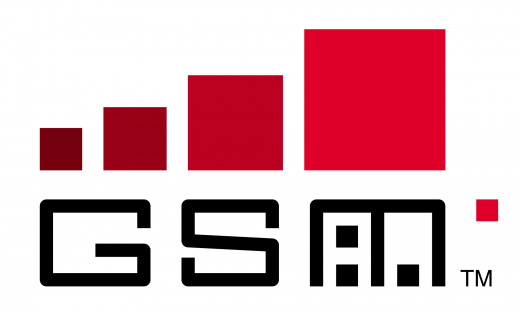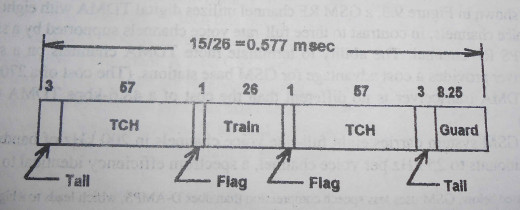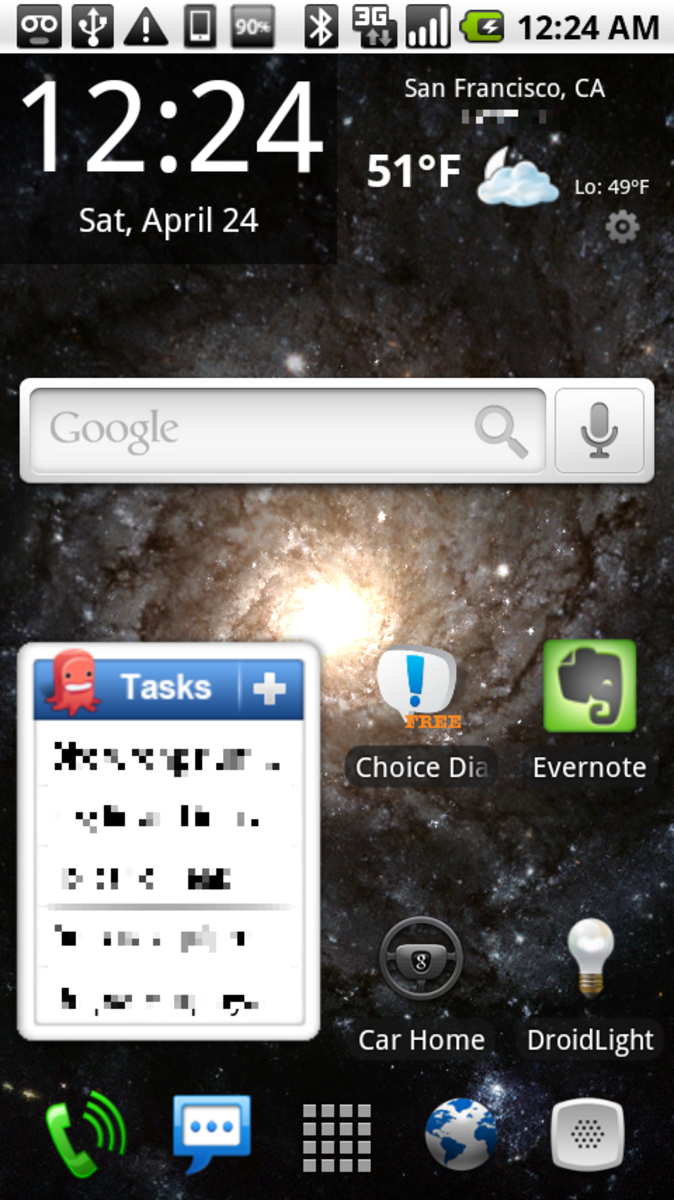GSM

Global System For Mobile Communications
Global System for Mobile communications (GSM) is a cellular mobile communications system developed in Europe and standardized by the European Telecommunication Standards Instute (ETSI). GSM has subsequntly been adopted worldwide as the international digital mobile standard. Initial work on GSM standardization began in 1982. The first field trial of a GSM system occurred in 1991.
The International Telecommunication Union (ITU) allocated frequently spectrum at 935-960 MHz for the downlink (base station to mobile) and 890-915 MHz for the established analog systems, there was no attempt to be compatible with the existing frequency plan. (The incumbent analog systems in the varios European countries were incomatible with each other and a main goal of GSM was to establish a common standard so backward compatibility was not a consideration.)
- Personal Communication System
In a number of countries throughout the world, a wireless service called the personal communication system (PCS) is available. Learn What is Personal Communication System.
GSM Channel Structure
Starting with an open-spectrum plan provided GSM system designers with more free dom in system design than was available to D-AMPS designers. The most significant difference in GSM with respect to D-AMPS is the use of 200-KHz-wide digital RF channels as opposed to the 30-KHz-wide D-AMPS RF channels. Each GSM RF channel operates at 270.833 Mbps using GMSK modulation. GMSK modulation is fairy closely related to 4-PSK modulation as used in D-AMPS. GSMK modulation does, however, require more bandwidth than tihgtly filtered 4-PSK,as evidenced by an information density of 270.833/200 = 1.35bps/Hz for GSM and 48.6/30 = 1.62 bps/Hz for D-AMPS. The GMSK modulation format of GSM provides a constant-envelope RF signal that is more efficient for RF power generation than is tightly filtered 4-PSK modulation used by D-AMPS. The efficiency is most important for hand-held battery life.
As shown the screenshot bellow, a GSM RF channel utilizes digital TDMA with eight full rate voice channels, in contrast to three full-rate voice channels supported by a signal D-AMPS RF channel. The ability to terminate more TDMA channels on a single transceiver provides a cost advantage for GSM base stations. (The cost of a 270.833-kbps TDMA transceiver is no different than the cost of a 48.6-kbps TDMA transceiver.)

The GSM system carries eight full-rate voice channels in 200 kHz of bandwidth, which amounts to 25 kHz per voice channel, a spectrum efficiency identical to European analog FDM systems of the time. Thus, the introduction of GSM system did not provide spectrum efficiency improvements as D-AMPS did. A GSM system does, however, cellular system effieiencies in that digital transmission, in general, and strong error correction, in particular, allow operation at lower signal-to-noise ratios. Greater noise or interference tolerance leads to longer transmission distances and/or greater amounts of frequency reuse.
The burst period of a GSM system is 120/26/8=15/26 ms. This burst period is derived from a 120ms superframe consisting of 26 TDMA frames and 8 bursts per TDMA frame. Twenty four frames of a 26-frame super frame is allocated to traffic (a.g. Voice) transmission while one of the frames is allocated to a SACCH control channel for each traffic channel. The last TDMA frame of a superframe is reserved. A unique aspect of GSM, whith respect to D-AMPS, is that a TDMA burst format is used in a both directions of transmission, as opposed to only on the uplink from the mobile to the base station. The format of these bursts is shown in the below screenshot, where it can be seen that there are 148 bits of data and an idle guard time corresponding to the period of 8.25 bits. The fields within the burst are identified in table given below.

The use of multiple bursts in the downlink direction, as opposed to continuous transmission, is advantageous in that it inherently allows turning off the base station transmitter during idle channels, which in turn reduces the total amount of intereference between calls in a widespread and congested installation. An advantage of continuous transmission, as used in D-AMPS, is the relative ease of implementation and greated performance of the digital receiver in the mobile.
Data Field Functions of GSM Time Slot
Flag
| A single bit used to signify voice of FACCH content in an associated TCH field
|
Guard
| Idle period of 8.25 bits intervals timing margin between bursts
|
Tail
| 3 "0" bits for equallizer training
|
TCH
| Field for transporting bearer data or FACCH data
|
Train
| Field of fixed data pattern used to train equalizers and acquire a data clock for the entire burst
|
GSM Speech Coding
GSM uses regular pulse excited-linear predictive coding with a long term predictor loop (RPE-LTP). The RPE-LTP (regular pulse excitation – long-term prediction) scheme is employed in order to reduce the amount of data sent between the mobile station and base transceiver station. Speech is devided into 20-msec samples, each of which is encoded as 260 bits, giving a total bit rate of 13 kbps. This is the original, full-rate speech-coding algorithm. An enhanced full-rate (EFR) speech-coding algorithm gas been implemented by some North Americal GSM 1900 operators. EFR is said to provide improved speech quality using existing 13 kbps bit rate.
GSM Channel Coding and Modulation
GSM utilizes error control mechanisms similar to D-AMPS. First of all, 260 bitsof speech frame are divided into three classes.
- Class Ia, 50 bits - most sensitive to bit errors.
- Class Ib, 132 bits - moderately sensitive to bit errors.
- Class II, 78 bits - least sensitive to bit errors.
Class Ia bits have a 3-bit CRC added for error detection. If an error is detected, the frame is replaced by a slightly attenuated version of the previous correctly received frame. The 50 Class Ia, 3CRC, 132 Class Ib, anda 4 bit tail sequence (a total 189 bits) are processed by a half-rate convolutional encoder for error correction. The output of the convolutional encoder is added to the 78 Class II bits to produce and aggregate speech frame of 456 bits. Thus, the redundantly encoded speech rate is 456/0.020=22.8 kbps.
To further protect against the burst errors, each sample is interleaved. The 456 bits of output by the convolutional encoder are divided into eight blocks of 57 bits, and these blocks are spread across eight consecutive times slot bursts. Since a time slot burst carries two 57-bit blocks, each burst contains traffic from two different speech samples.
GSM Mobile Station
The GSM mobile station (MS) consists of the mobile equipment (the terminal) and a smart card called the Subscriber Identity Module (SIM). The SIM provides personal mobility, so that the user can have access to subscribed services irrespective of a specific terminal. By inserting the SIM card into another GSM terminal, the user is able to receive calls at that terminal, make calls from that terminal, and receive other subscribed services.
The mobile equipment is uniquely identified by the International Mobile Equipment Identity (IMEI). The SIM card Contains the International Mobile Subscriber Identity (IMSI) used to identify the subscriber to the system, a secret key for authentication, and other information. The IMEI and the IMSI are independent, thereby allowing personal mobility. The SIM card may be protected against unauthorized use by a password or personal identity number (PIN).
GSM Frequency Hopping
The Mobile Station is inherently frequency agile, meaning it can move between a transmit, and monitor time slot within one TDMA frame, all of which are normally on different frequencies. GSM makes use of this inherent frequency agility to implement slow frequency hopping- the mobile and BTS transmit each TDMA frame on a different carrier frequency. The frequency-hopping algorithm is broadcast on the broadcast control channel. Since multipath fading is dependent on carrier frequency, slow frequency hopping helps alleviate the problem. In Addition, cochennel interference is more random than when fixed-frequency allocations exist.
GSM Short Message Service
Short Message Service (SMS) is an integrated bidirectional messaging service that allows GSM cellular subscribers, and various PCS offerings, to send and receive data. Indevidual messages (with GSM) can be up to 160 bits in length. Because SACCH is used for SMS data transmission, messages can be received or transmitted during a voice call. Initial applications of SMS focused on alphanumeric paging services with fundamental differences: SMS is bidirectional and message delivery is guaranteed. Subsequent applications served by SMS are voice mail notificaion, email delevery, stock quotes, and downloading/updating of SIM cards.








